Habutae Fabric Product Guide Video
Choosing the Right Habutae Fabric for You
Our habutae comes two different varieties:
Silk Habutae
Silk habutae is made from 100% pure silk fibers that can be dyed and is available in 2 weights.
Polyester Habutae
China silk habutae is 100% polyester, comes in many colors, and is the more cost effective of the two options.
Working with Habutae Fabric
Habutae is a silky smooth, lightweight fabric that can be a little tricky to sew because of how slippery it can be. So here are a few tips to help you through it.
Care & Preparation:
Pre-wash the fabric if you wish, using the method you plan to launder the finished garment. 100% silk habutae should only de dry cleaned, while china silk habutae can be washed in a machine on a cold delicate cycle and hung to dry.
Cutting:
When cutting habutae, use sharp shears and cut slowly, checking often to make sure that your fabric has not slipped. It is a great idea to mark out what you are cutting with a fabric marker beforehand, so you can see that your lines are straight and even before you make your cuts. We also don’t recommend folding the fabric in half and cutting on the fold, because of how slippery this fabric can be.
Needle & Thread:
Choose a fine (75/11 to 65/9) ball point needle when sewing with Habutae and a quality polyester thread.
Pinning:
When pinning habutae, use lots of extra thin pins, preferably a silk pin, but anything size 17 and under would be well. Try your best to pin in the seam allowances though, as this fabric snags easily.
Sewing:
Habutae can be tricky to work with if you are not used to sewing very lightweight fabrics. But there are a few tricks. One pro tip is using a walking foot. If you plan on sewing lightweight or slippery fabrics often this is going to be a great tool for you. The walking foot adds feed dogs on the top of the fabric so it gets pushed through on both sides.
Stitches:
When you’re ready to sew, you want to use a straight stitch with a short stitch length and lower the tension for a looser stitch that is less likely to pucker.
If you are having a hard time getting a stitch started (ie- it keeps getting sucked into your machine) place tissue paper or fabric stabilizer on the top of bottom of your fabric and sew like normal. Then after you are done sewing you can just rip the paper away.
If you are working with a really delicate looking garment, don’t backstitch at the beginning and end. This can sometimes make the stitch look bulky. Instead, leave plenty of thread hanging loose and tie it off after you are done sewing.
Techniques:
Consider using a French seam with habutae for professional looking seams that do not fray. See out tutorial on how to make French seams for details.
A serger (overlocker) offers an alternative means of construction and will cut down on any amount of fraying you may have, but this is often slightly bulkier than a French seam and may not be the preferred method when constructing delicate apparel.
You could also use dritz fray check to help cut down on fraying.
Ironing:
When ironing habutae, we recommend using a dry press cloth. For 100% silk habutae, use a high heat setting but NO steam. Water can stain and ruin 100% silk fabric. If you are working with the polyester variety you should use a medium setting.

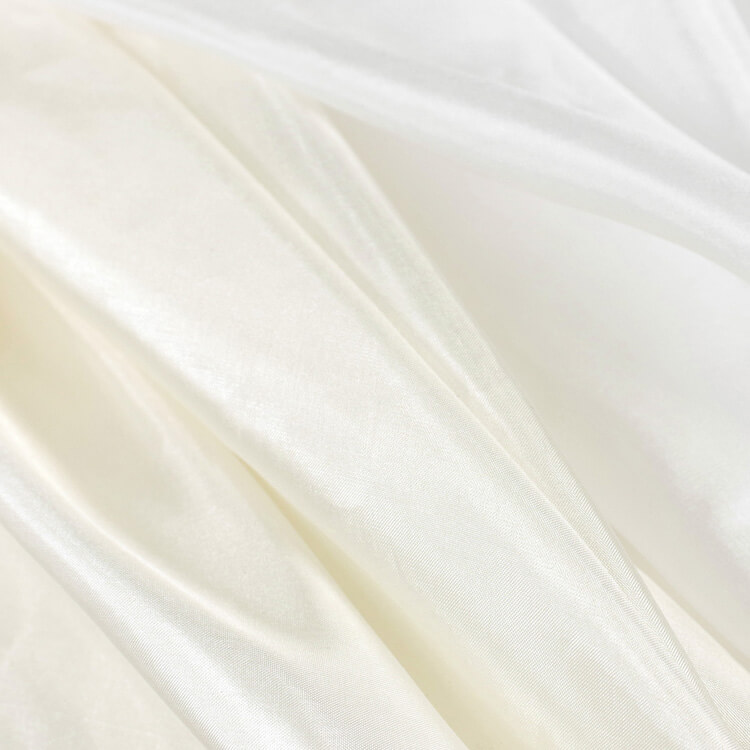
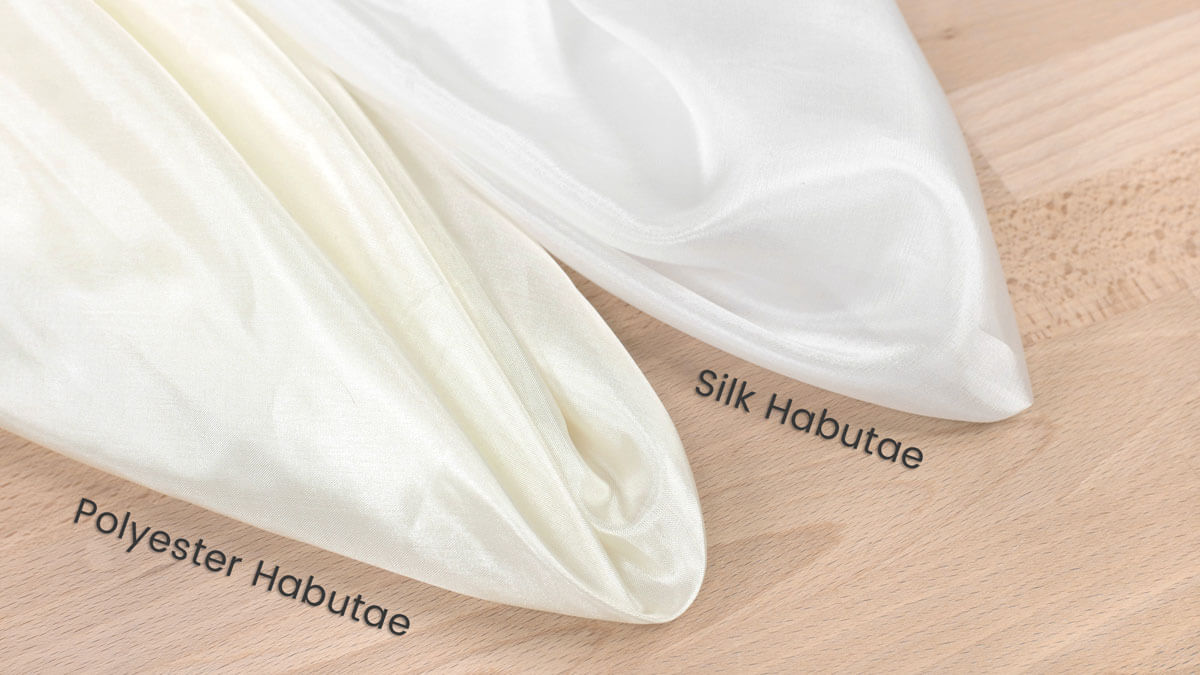
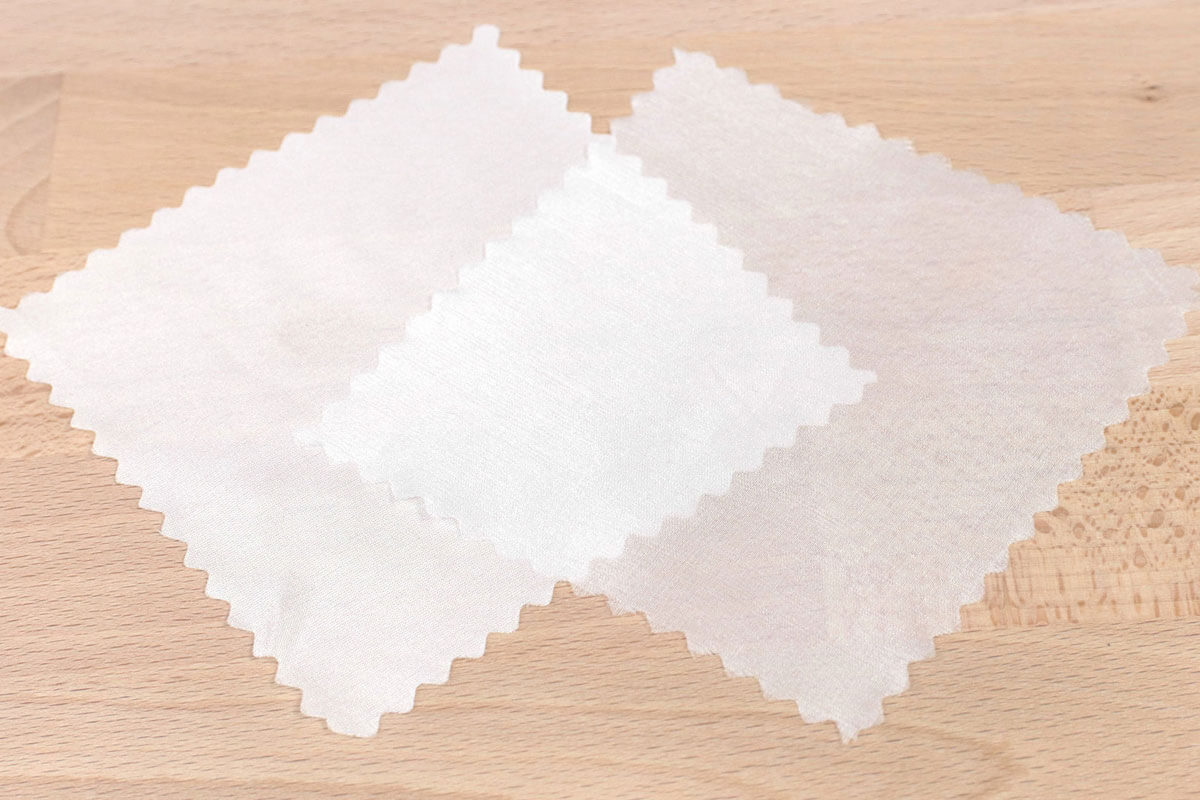 Silk habutae in 8mm (left) and 5mm (right) weights
Silk habutae in 8mm (left) and 5mm (right) weights
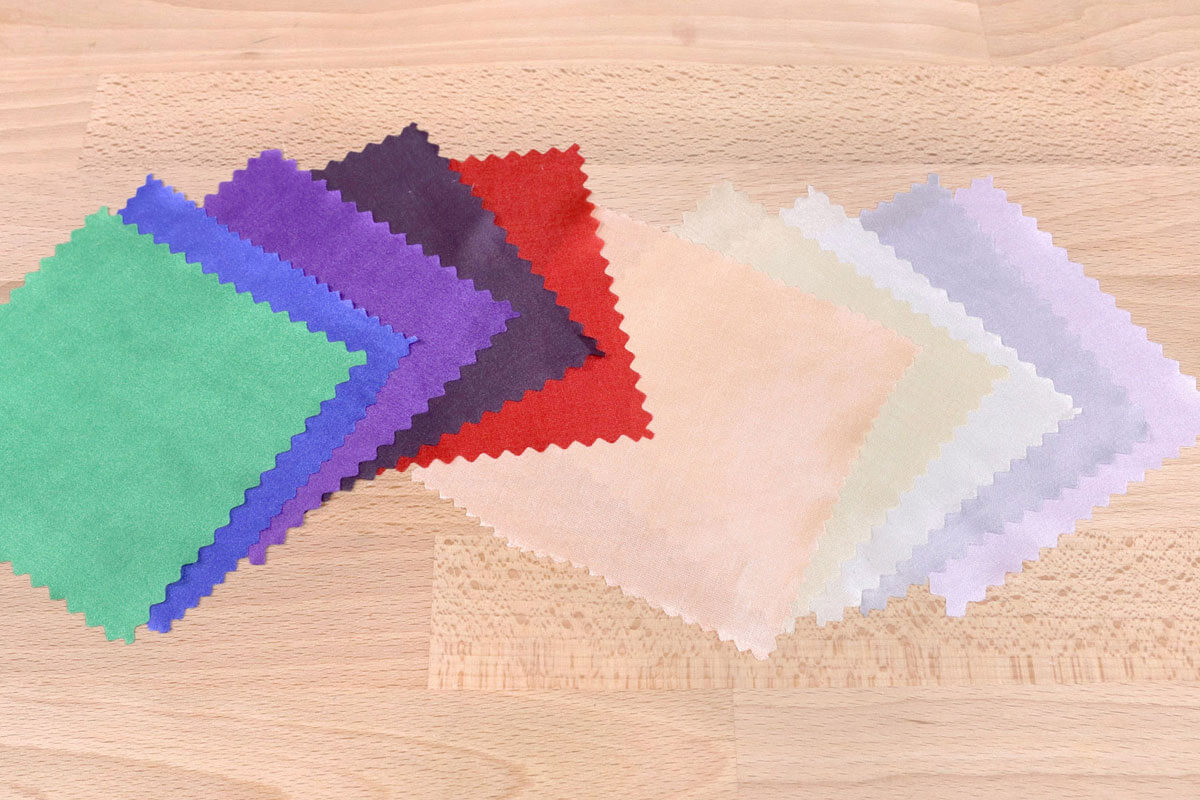 Polyester habutae comes in dozens of colors
Polyester habutae comes in dozens of colors
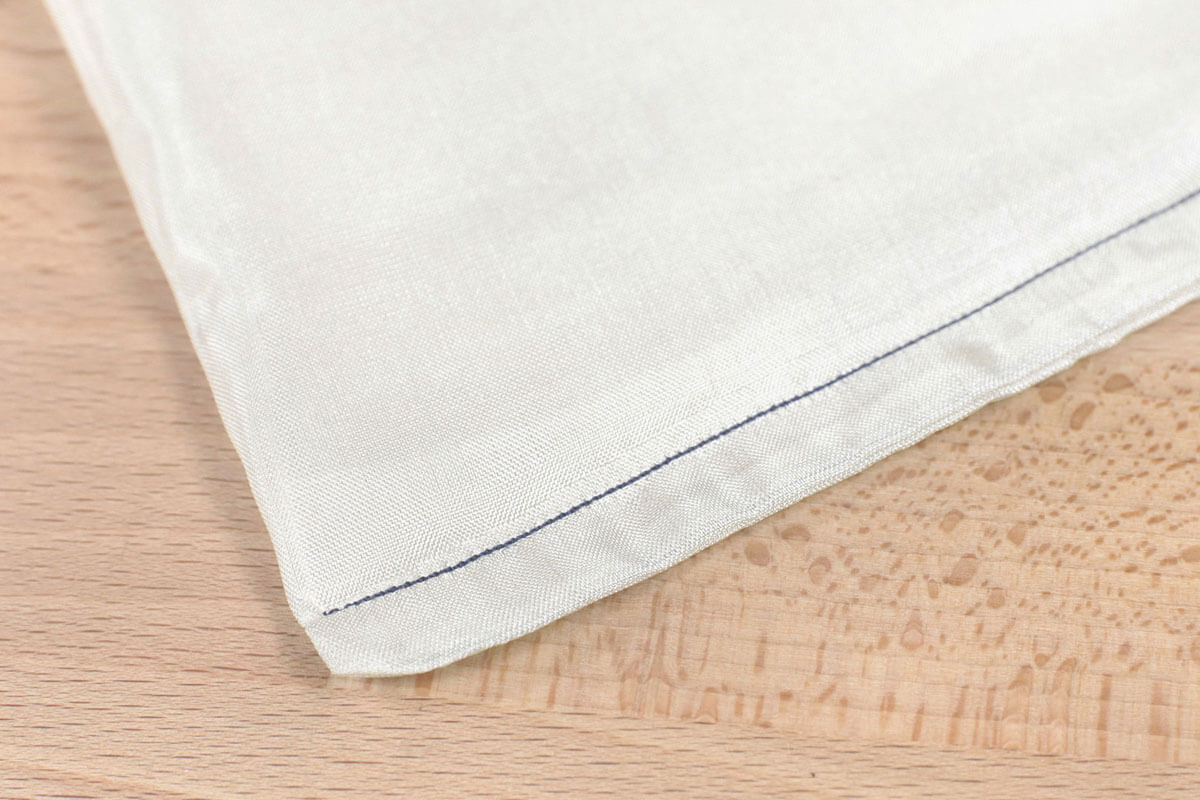 Inside of French seam
Inside of French seam
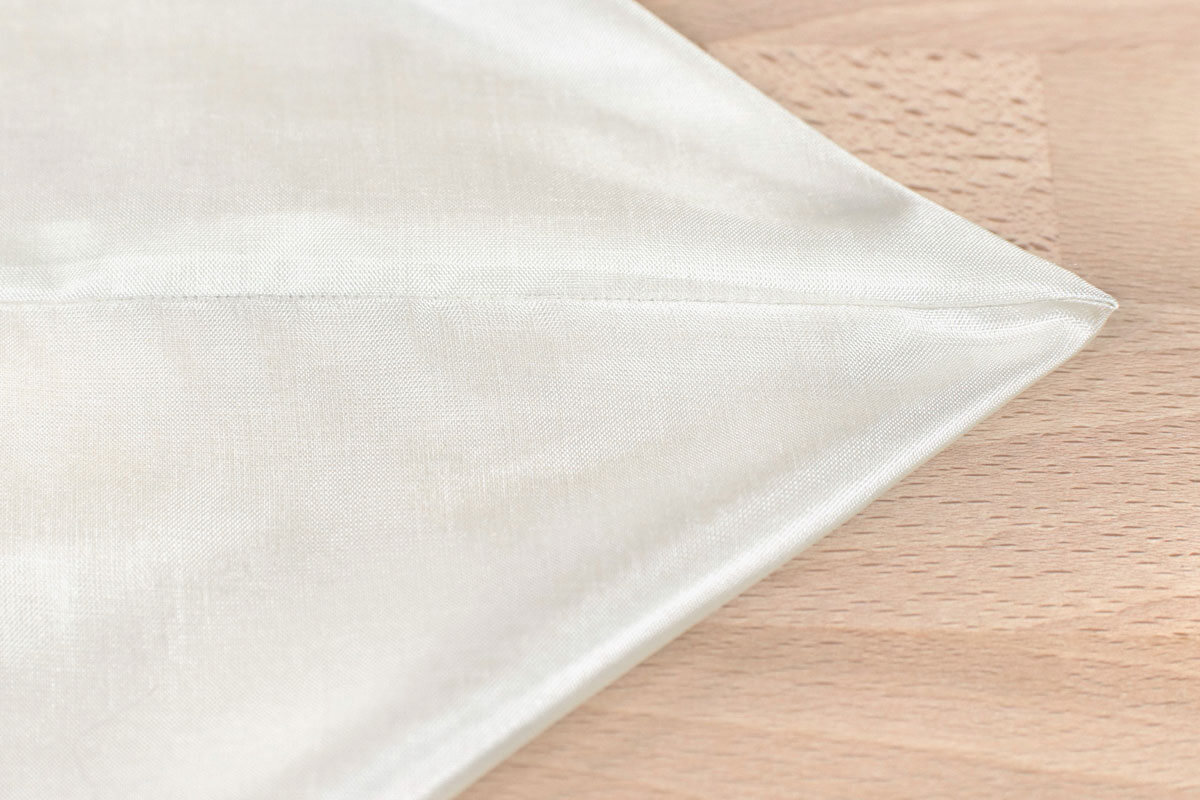 Outside of French seam
Outside of French seam